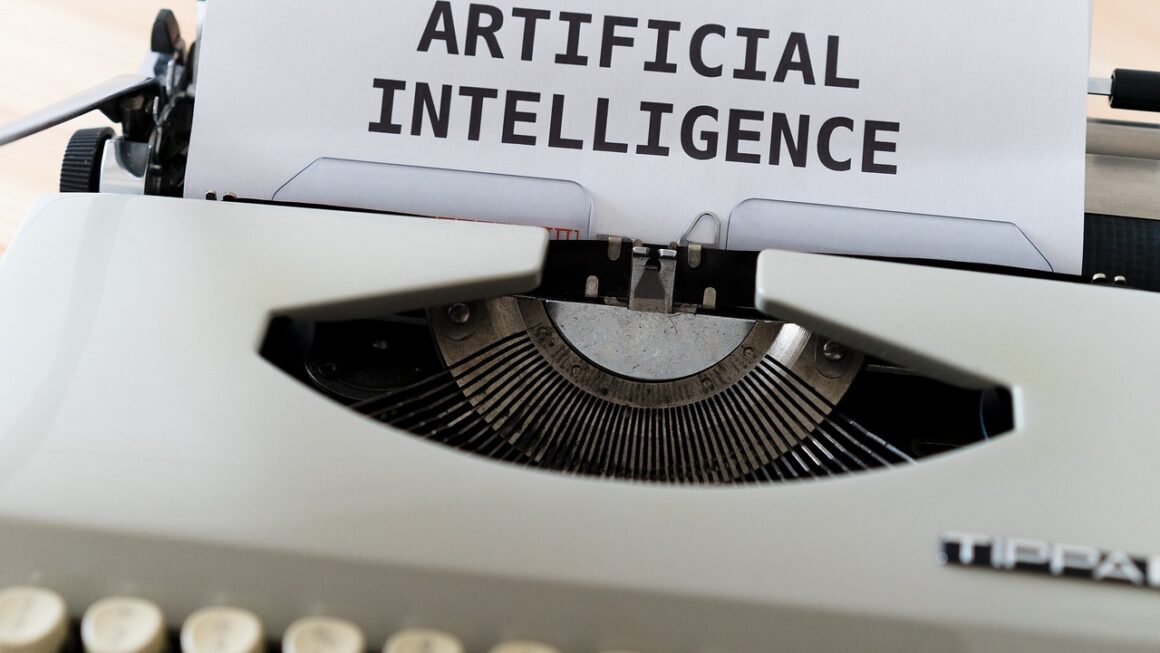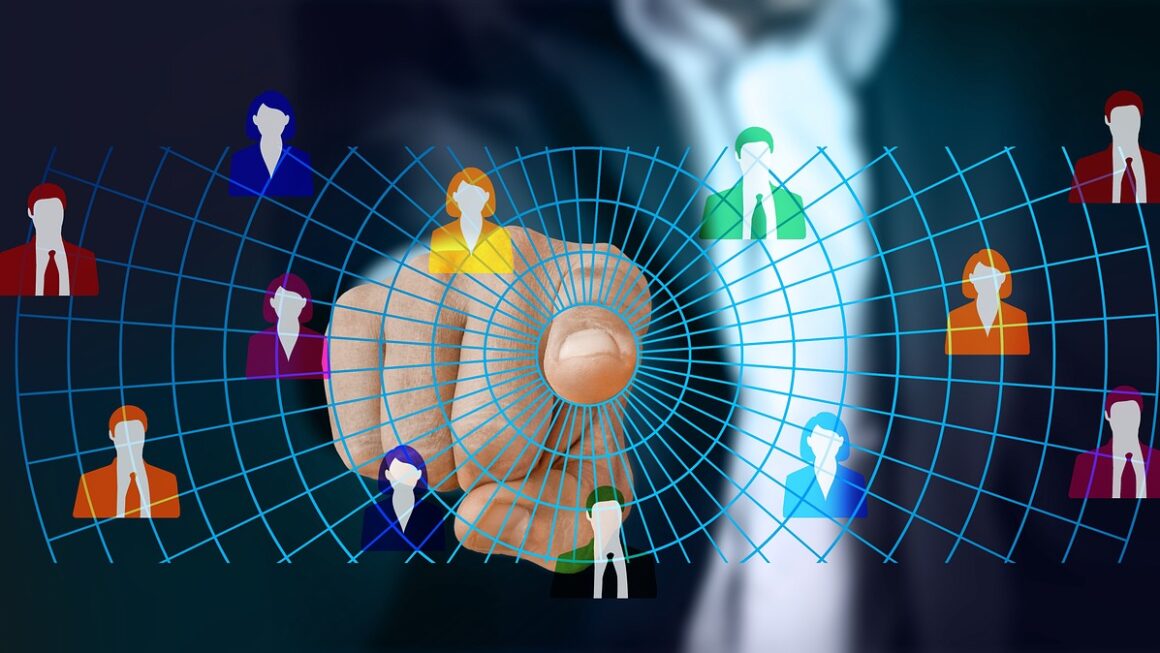Deep learning, a cornerstone of modern artificial intelligence, has revolutionized fields from image recognition and natural language processing to robotics and drug discovery. Its ability to learn complex patterns directly from raw data, without explicit programming for specific tasks, has unlocked unprecedented capabilities. Whether you’re a seasoned data scientist or just curious about the future of AI, understanding the fundamentals of deep learning is crucial. This post dives deep into the core concepts, architectures, and practical applications of this transformative technology.
What is Deep Learning?
Deep Learning Defined
Deep learning is a subfield of machine learning that focuses on artificial neural networks with multiple layers (hence “deep”). These networks, inspired by the structure and function of the human brain, can learn intricate representations of data by processing it through layers of interconnected nodes or “neurons.” Each layer extracts increasingly abstract and complex features, enabling the system to perform tasks that were previously impossible with traditional machine learning algorithms.
How Deep Learning Differs from Machine Learning
While deep learning is a type of machine learning, it differs in several key aspects:
- Feature Engineering: Traditional machine learning often requires manual feature engineering, where experts identify and extract relevant features from the data. Deep learning, on the other hand, automatically learns these features from the raw data, significantly reducing the need for human intervention.
- Data Requirements: Deep learning models typically require massive amounts of data to train effectively. This is because the deep networks have a large number of parameters that need to be learned from the data. Traditional machine learning algorithms can often perform well with smaller datasets.
- Computational Power: Training deep learning models can be computationally expensive, requiring powerful hardware such as GPUs (Graphics Processing Units). Traditional machine learning algorithms often have lower computational requirements.
- Complexity: Deep learning models are generally more complex and harder to interpret than traditional machine learning models. Understanding why a deep learning model makes a certain prediction can be challenging.
The Basic Building Blocks: Neural Networks
At its core, deep learning relies on artificial neural networks. A simple neural network consists of:
- Input Layer: Receives the initial data.
- Hidden Layers: Layers that process the input and extract features. Deep learning models have multiple hidden layers.
- Output Layer: Produces the final result or prediction.
- Neurons (Nodes): Each neuron in a layer receives input from the neurons in the previous layer, performs a calculation (often involving an activation function), and passes the result to the neurons in the next layer.
- Weights: Represent the strength of the connections between neurons. These are the parameters that the network learns during training.
- Biases: Added to the weighted sum of inputs to a neuron, allowing the network to learn even when the inputs are zero.
- Activation Functions: Introduce non-linearity into the network, allowing it to learn complex relationships in the data. Common activation functions include ReLU (Rectified Linear Unit), sigmoid, and tanh.
Common Deep Learning Architectures
Convolutional Neural Networks (CNNs)
- Purpose: Primarily used for image and video processing tasks.
- How They Work: CNNs use convolutional layers to extract features from images. These layers apply filters to the input, detecting patterns such as edges, textures, and shapes. Pooling layers reduce the spatial dimensions of the feature maps, making the network more robust to variations in the input.
- Example: Image recognition (e.g., identifying objects in photos), object detection (e.g., finding cars in a video), medical image analysis (e.g., detecting tumors in X-rays).
- Key Layers: Convolutional layers, pooling layers, fully connected layers.
Recurrent Neural Networks (RNNs)
- Purpose: Designed for processing sequential data such as text, speech, and time series.
- How They Work: RNNs have a recurrent connection, allowing them to maintain a “memory” of previous inputs in the sequence. This makes them well-suited for tasks where the order of the data is important.
- Example: Natural language processing (e.g., machine translation, sentiment analysis), speech recognition, time series forecasting.
- Variants: Long Short-Term Memory (LSTM) and Gated Recurrent Unit (GRU) networks are popular variants of RNNs that address the vanishing gradient problem and can handle longer sequences.
Autoencoders
- Purpose: Primarily used for dimensionality reduction, feature learning, and anomaly detection.
- How They Work: Autoencoders learn to compress the input data into a lower-dimensional representation (the “encoding”) and then reconstruct the original data from this representation. By forcing the network to learn a compressed representation, it captures the most important features of the data.
- Example: Image denoising (e.g., removing noise from images), anomaly detection (e.g., identifying fraudulent transactions), data compression.
- Key Components: Encoder, decoder, bottleneck layer.
Generative Adversarial Networks (GANs)
- Purpose: Used for generating new, realistic data samples.
- How They Work: GANs consist of two networks: a generator and a discriminator. The generator tries to create fake data that resembles the real data, while the discriminator tries to distinguish between real and fake data. The two networks are trained in an adversarial manner, with the generator trying to fool the discriminator and the discriminator trying to catch the generator’s fakes.
- Example: Image generation (e.g., creating realistic images of faces), text-to-image synthesis (e.g., generating images from text descriptions), video generation.
The Deep Learning Workflow
Data Preparation
- Data Collection: Gathering relevant data is the first step. The quality and quantity of the data significantly impact the model’s performance.
- Data Cleaning: This involves handling missing values, removing outliers, and correcting inconsistencies in the data.
- Data Preprocessing: Transforming the data into a suitable format for the model. This may involve scaling, normalization, and encoding categorical variables.
- Data Augmentation: Increasing the size and diversity of the training data by applying transformations such as rotations, flips, and crops (especially important for image data).
Model Building
- Architecture Selection: Choosing the appropriate deep learning architecture for the task at hand (e.g., CNN for image recognition, RNN for sequence modeling).
- Layer Configuration: Determining the number of layers, the number of neurons per layer, and the types of activation functions to use.
- Hyperparameter Tuning: Optimizing the hyperparameters of the model, such as the learning rate, batch size, and number of epochs.
- Framework Selection: Choosing a suitable deep learning framework such as TensorFlow, PyTorch, or Keras.
Model Training
- Loss Function: Defining a loss function that measures the difference between the model’s predictions and the actual values.
- Optimization Algorithm: Selecting an optimization algorithm such as stochastic gradient descent (SGD) or Adam to update the model’s weights and biases based on the gradients of the loss function.
- Monitoring Performance: Tracking the model’s performance on a validation set during training to prevent overfitting.
- Saving Checkpoints: Saving the model’s weights and biases at regular intervals during training to allow for resuming training or evaluating the model at different stages.
Model Evaluation
- Metrics Selection: Choosing appropriate evaluation metrics for the task at hand (e.g., accuracy, precision, recall, F1-score).
- Testing on Unseen Data: Evaluating the model’s performance on a separate test set that was not used during training.
- Analyzing Results: Identifying areas where the model performs well and areas where it needs improvement.
Model Deployment
- Integration: Integrating the trained model into a production system or application.
- Optimization: Optimizing the model for performance and efficiency.
- Monitoring: Monitoring the model’s performance in production and retraining it as needed to maintain its accuracy.
Practical Applications of Deep Learning
Image Recognition and Computer Vision
Deep learning has achieved remarkable success in image recognition, enabling applications such as:
- Facial Recognition: Identifying individuals in images or videos. Used in security systems, social media, and mobile devices.
- Object Detection: Locating and identifying objects in images or videos. Used in autonomous vehicles, robotics, and surveillance systems.
- Image Classification: Categorizing images based on their content. Used in image search engines, medical image analysis, and agricultural monitoring.
Natural Language Processing (NLP)
Deep learning has revolutionized NLP, enabling applications such as:
- Machine Translation: Translating text from one language to another. Google Translate and other translation services rely heavily on deep learning.
- Sentiment Analysis: Determining the emotional tone of text. Used in marketing, customer service, and social media monitoring.
- Chatbots and Virtual Assistants: Creating conversational agents that can interact with users in natural language.
- Text Summarization: Generating concise summaries of long documents.
Speech Recognition
Deep learning has significantly improved the accuracy and reliability of speech recognition, enabling applications such as:
- Voice Assistants: Controlling devices and accessing information using voice commands. Examples include Siri, Alexa, and Google Assistant.
- Dictation Software: Converting spoken words into text.
- Transcription Services: Automatically transcribing audio and video recordings.
Healthcare
Deep learning is being used to improve healthcare in various ways, including:
- Medical Image Analysis: Detecting diseases and abnormalities in medical images such as X-rays, MRIs, and CT scans.
- Drug Discovery: Identifying potential drug candidates and predicting their efficacy.
- Personalized Medicine: Tailoring treatment plans to individual patients based on their genetic makeup and other factors.
Finance
Deep learning is being used in finance for tasks such as:
- Fraud Detection: Identifying fraudulent transactions.
- Risk Management: Assessing and managing financial risks.
- Algorithmic Trading: Developing automated trading strategies.
Conclusion
Deep learning is a rapidly evolving field with the potential to transform many industries. By understanding the core concepts, architectures, and practical applications of deep learning, you can unlock new opportunities and contribute to the development of innovative solutions. Whether you’re interested in image recognition, natural language processing, healthcare, finance, or any other field, deep learning provides powerful tools for solving complex problems and creating new possibilities. The journey into deep learning can be challenging, but the rewards are well worth the effort.




